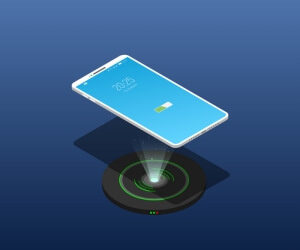 My girlfriend recently bought a wireless charger for her Samsung phone. She was really excited about it. And, if I’m being honest, I was too. The world needs fewer wires, and the whole wireless-charger thing has been a long time coming.
My girlfriend recently bought a wireless charger for her Samsung phone. She was really excited about it. And, if I’m being honest, I was too. The world needs fewer wires, and the whole wireless-charger thing has been a long time coming.
Unfortunately though, the charger was a lot slower than we thought it would be. The LED lights were annoying, too – they were so bright at night that they lit up her entire room. It made me wonder if we’d just bought a bad brand, and if there were better wireless chargers out there.
Which of course is when I decided to write a review article on them!
10 Best Wireless Chargers
Wires are such a mess! You could be looking at the most beautiful piece of gadgetry the world has ever seen, and it could be ruined by an eyesore of tangled wires. And there are few first-world problems more irritating than the speed with which knots tangle.
That’s why nearly every sector in the tech industry is coming up with new and innovative ways to get rid of wires; from controllers for your PS4 to earphones to now phone chargers.
What follows is a comprehensive review of ten wireless chargers, picked either because I wanted to see if they were as good as they claimed to be, or because people asked me to look at them specifically. If you don’t want the deep dive and would rather get to the point with some useful takeaways, then here are the top ten wireless chargers on the market:
| Device Name | AC Adapter Included | Max Output (Watt) | Qi Certified | |
|---|---|---|---|---|
| Nanami Charging Stand | No | 7.5 | Yes | |
| Yootech Wireless Charger | No | 7.5 | Yes | |
| Anker PowerPort Stand | No | 5 | Yes | |
| Kuppet Charging Pad | No | 10 | Yes | |
| Ellesye Charging Stand | No | 5 | Yes | |
| Samsung EP-N5100TBEGUS | Yes | 9 | Yes | |
| Pleson Pad (Editor\'s Choice) | No | 13.5 | Yes | |
| Seneo Charging Stand | No | 10 | Yes | |
| Choetech Charging Stand | No | 10 | Yes | |
| RAVPower Charger | Yes | 10 | Yes |
There is also a buying guide at the end of the article. There, I discuss some of the common features of wireless chargers and what to look at when doing comparisons between different chargers. You can use the tips to evaluate any wireless charger you find out there, even if it isn’t already on my list.
1. RAVPower – Best for techies
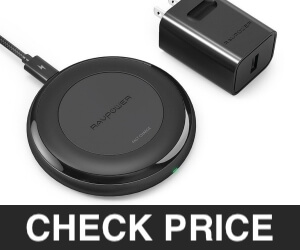
In my mind, the biggest selling point for RAVpower’s Fast Wireless Charger is its sleek design. It’s one of the most futuristic looking chargers on our list. When I put a wired charger next to a RAVPower, I feel like the RAVpower is an artifact left behind by a time traveler from the 24th century. That’s how good the design is.
The RAVpower is a Qi-certified charger, meaning it works with a fair number of devices, including the iPhone 8, 8 Plus, the iPhone X, as well as the Samsung Galaxy S7, S8, S9, S7 , and the Note 8.
But, to be honest, as good as it looks, this isn’t the fastest wireless charger on the market. There are some seriously fast wireless chargers out there. At the upper end, some will charge your phone at a rate of 15-watts. On the lower side, we have wireless chargers that will hobble along at a speed of 3.5-watts.
That being said, the RAVpower charges compatible iPhone devices (including the 8, 8 Plus, and X) at 7.5-watts. While this falls in the middle of the range of 3.5-15, it’s actually above the mode of our set. What I mean by this is, more than half of the devices I looked at charged Apple devices at 5-watts or less. None of them charged faster than 7.5 – so while the RAVpower isn’t the fastest on the market, it isn’t bad.
Because of the different designs between Apple and Samsung devices, Samsungs can be charged faster than Apple products. The RAVpower charges compatible Samsung devices (including the Galaxy S7, S8, S9, and the Note 8) at 10-watts. That’s faster than three of the other chargers on our list, slower only than one, and as fast as the other five.
What I Like
The very first thing I absolutely love about RAVPower wireless chargers is the design. These are some of the most futuristic looking chargers I have ever seen. You could buy one for nothing more than the pleasure of having people asking you to tell them more about your cool new gadget.
The RAVPower’s design lets it dispense heat about 15% faster than similarly priced chargers. I personally don’t like the idea of a hot phone or charger during the charging process. With all the reports of batteries exploding, I’m always afraid it’s going to blow up.
The RAVPower also protects your phone against some of the common problems that occur with rechargeable batteries: overcharging, overvoltage, and overcurrent.
Similarly, the RAVPower protects against overvoltage (when the charging delivers too much power for your device) and overcurrent (a power surge).
All of these capabilities are bundled up under a proprietary technology known as HyperAir. To be honest, these are standard things you will find in any wireless charger worth its salt, but there’s something extra that HyperAir technology does that makes it truly stand out: it is capable of detecting your iPhone instantaneously because it shares the same fixed frequency program that your iPhone has. That means that as soon as your iPhone is within a minimum range, it starts to charge straight away.
What I Don’t Like
Okay, the first thing I really don’t like here is the fact that the LED on the charger will stay orange no matter whether my iPhone is standard charged, fast charged, or fully charged. With Samsung Galaxies, the LED turns green. This is because of the difference in how the iPhones and Galaxies communicate with the wireless charger.
Your phone also shouldn’t have casing thicker than 3 mm or the wireless charger won’t be able to charge it. With many other chargers, the maximum width is 4 or 5 mm. When it comes to phone cases, that extra allowance can make a huge difference. Don’t put anything between your phone and the charger either, because that will also keep it from charging. And that includes metals and magnets. In fact, magnets might mess up the functioning of the wireless charger; I really feel like they could have done a little more as far as the resilience and robustness of the charger is concerned. It’s probably great for a home or office where it’s going to sit by a computer and you know nothing’s going to hurt it. But if it’s in a common space – in a dorm or a shared office – the chance of it being damaged is a little too high for my blood.
- Great design
- HyperAir Technology detects iPhone instantly
- Prevents overheating, overcurrent, overvoltage, and overcharging
- No signal gets sent to the charger from iPhones so the LED light always glows orange, even in different conditions
- A little on the fragile side. Maybe not great for common areas
2. Choetech – Best for frequent use
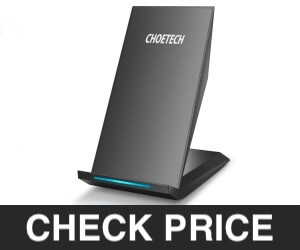
The Choetech approach to wireless chargers is pretty interesting. They wanted to make a versatile charger – one that can do a little bit of everything pretty well – and that’s what they delivered.
As the name implies, Choetech designed the QI Fast Wireless Charging Stand as… well… a stand. This allows it to be easily used while your device is charging. Other designs on the market include mats (which allow multiple devices to charge at once) and pucks (which can only charge a single device that is lying flat). You can imagine how much easier it would be to use your phone when it’s at an upright angle, as opposed to lying flat on your desk.
What I Like
Let’s take a minute to get back to the fact that this Qi-certified wireless charger is a stand. It allows you to place your phone in either landscape or portrait modes. That way, you can use your phone in whatever way the app you’re running demands. Meanwhile, the wireless charger will be filling it up with juice.
There is an LED strip at the base of the charger that tells you what mode it is in. When it glows blue, it means the wireless charger is in standby mode. When it glows green, it means your phone is charging.
For compatible Samsung devices (the Galaxy S9, S8, S7, S7 Edge, S6, and S6 Edge, and the Galaxy Note 9, Note 8, and Note 5), the charging rate is 10-watts. I find this works great. I can use them while they’re charging without draining the battery so much that it stops actually charging.
I also like the considerate design. You might think that, because it is a wireless charging stand, the charging area will be a little restricted. However, the design involves two coils, which means it has a much wider charging area than expected. Place your phone in landscape or portrait position and it will still charge.
This wireless charger also features charging and temperature protection, due to the clever circuitry in the device. It has anti-slip rubber feet for more stability.
What I Don’t Like
For those charging the iPhone, you will notice that the 5-watt rate is anything but speedy. In fact, if you have your GPS switched on, or any other app that places heavy demands on the phone’s power, then don’t expect your phone’s battery to get full anytime soon.
I didn’t like the fact that it doesn’t come with an adaptor right out of the box. That means I had to go hunting for an adaptor with the right specifications in order to use it.
I have to advise that you first make sure your phone is supported before buying this charger. You should also check if the phone casing is less than 4 mm.
- Different modes for charging
- Supports both portrait and landscape positions for your phone
- Fast charging time for Samsung phones
- Doesn’t come with an adaptor
- A little slow for Apple products
- Is a little sensitive for some brands
- A maximum width of 4mm for the phone’s case
3. Seneo – Best case-friendly charger
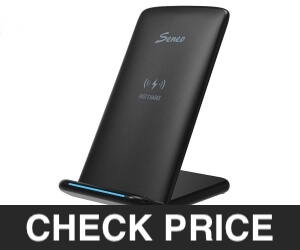
Seneo is one of the world’s leading brands, with over 2 million customers. Of course, Seneo insists that all of these were satisfied customers; I decided to be one of those customers, have a look at their Qi Certified Wireless Charging Stand, and decide for myself.
It comes in a really cool and sleek design. From what I saw, most charging stands come in the same windsurfer design with only two real distinguishing features. The first is in the charging real estate. How many charging coils it has, and how they’re arranged, determines the size of the stand. The other distinguishing feature is in the design of the LED light that tells you whether the phone is charging or not. This one was a lot like the rest, but I liked the fairly glossy black on it. It just looked a little more ‘refined’ than the rest.
What I Like
As it turns out, the Seneo is a pretty good wireless charger (maybe those 2 million customers really are satisfied, after all!). As with most chargers, the Seneo has two modes, 5- and 10-watts. But, with the Seneo, the numbers of watts isn’t the whole story.
The 10-watt mode is – and if you’ve been reading this article through, you’ll know the answer here – for the Samsung Galaxy suite of phones and tablets. That includes the S6 onwards and the Note 5 onwards. The exact list is on their page.
That of course leaves the lower, 5-watt mode for iPhones, including the 8, the 8 Plus, and the X. 5-watts is on the low end of charging rates on our list. However, Seneo claims their connection is “more stable,” and promises faster speeds than other 5-watt chargers. They compare their charger to some of the 7.5-watt chargers that are on the market.
I didn’t quite get what they meant by “stability” – a stronger connection between the charger and phone maybe? Or something internal to the charger?
I never did figure that part out, but I did learn, through use, that it does a better job than other 5-watt chargers. In a few hours’ time, my iPhone went from 10% to 100% despite the fact that I was constantly messaging my girlfriend. I didn’t really put it through its paces by using a more intensive app, like a video or game. And I kept my GPS off. But still, compared to other 5-watt chargers put into similar conditions, it did better.
It comes with all the standard features. It’s Qi-certified, so it’s compatible with both Samsung and iPhone phones. It has temperature protection, voltage protection, short circuit protection, etc.
What I Don’t Like
As much as I would like to corroborate their claims, I really don’t think Seneo’s charging stand is comparable to a decent 7.5-watt charger. It did seem to be better than the average 5-watt wireless charger. And it may be better than some of the cheaper 7.5-watt chargers. But it certainly didn’t beat any of the good 7.5-watt chargers I tried.
Another downside is that this charging stand isn’t made for any other phone brands on the market. You should either have an iPhone or a Samsung.
I also don’t like the fact the package does not come with a Qi 2.0 or 3.0 adapter. You have to buy those separately. That is something I didn’t like about pretty much every charger on this list, but that doesn’t excuse Seneo.
- Ergonomic design
- Efficient charging
- Case friendly
- Only supports Samsung and iPhone phones
- Low charge rate for Apple products
- No Qi 2.0 or 3.0 adaptor
4. Pleson – Best value for your money
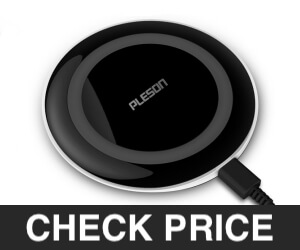
Some of my friends spoke highly of Pleson’s Ultra Slim Qi Wireless Charging Pad. I decided to borrow one of theirs, and give it a good comparison. And I have to say that, if you made a graph of the wireless chargers in this list with affordability on one axis and great features on the other, then Pleson’s pad would sit as a blip above the best-fit line.
What I Like
The biggest difference between Pleson and other brands is the charging rate. The Pleson comes in at a whopping maximum rate of 13.5-watts. That’s up to 1.4 times faster than similarly priced chargers on the market. My girlfriend loves it too. She is an absolute social media junkie and so she needs a charger that will either charge her phone super fast or handle heavy phone use while charging. The Pleson is a puck, so she has to wait for her phone to finish charging before she can use it, but it will charge her phone to 100% in an hour at the most.
I also liked the “intelligent identification design” – the LED light turns green when the phone is charging. It seems like such a simple thing to engineer charging lights into these devices, but not all of them do. You will also have to use either a QC 3.0 adapter or the original adapter that comes with your Samsung phone.
I want to know when my phone has finished charging, but I don’t need a constant reminder. Pleson has recognized that, and engineered their LED to turn off after 10 seconds. For me, that’s perfect. I pop in my phone and it flashes green briefly to show me that my phone is charging. Now that I know that little fun fact, I don’t need to constantly see the light or hear any annoying sound.
Another good thing with Pleson is the 3-year warranty. The standard warranty in the industry is 18 months. There is a charger on our list (the Ellesye) that offers a lifetime warranty. But Pleson’s 3-year warranty is a testament to how confident the people behind this brand are in the quality of their own technology. On top of their warranty, they also promise a 60-day money-back guarantee.
What I Don’t Like
One problem is that the fast mode is only available for the Samsung Galaxy suite of phones and tabs. That doesn’t even include standard charging Galaxy phones like the S6 and the S6 Edge. You will also have to settle for standard charging other Qi-enabled phones like the Google Nexus 5 and the Google Nexus 6.
For iPhones, the Pleson becomes rather surprisingly lackluster. With top speeds of 13.5-watts for Samsung phones, you would expect something like 7.5-watts for iPhones.
The Pleson is a puck charger. A puck charger is the manufacturer’s way of telling you that you can either charge your phone or you can use your phone, but you can’t have both. Why do I have to make a choice, Pleson?? Pucks are the literal, physical embodiment of that saying about not being able to have your cake and eat it too. While the charge rate for my iPhone isn’t horrible, I have to wait for it to charge completely before I can go through my messages and see what I missed. In the meantime, I’m cut off from the rest of the world and actually have to talk to people and take up hobbies like drawing with pencils like it’s 1999 again.
I also don’t like the fact that this charger isn’t very case friendly. Any phone case thicker than 2 mm will give you some serious problems when you try to charge your phone. You would also have to take off the back of the phone if it is metallic. This charger is completely intolerant of metal.
- Fast charging of 13.5-watts for Samsung phones
- Humanized LED design
- 3 Year warranty
- Not very case friendly
- Fast charging only available to Samsung phones
- Puck design means you can’t use phone while charging
5. Samsung – Best for Samsung users
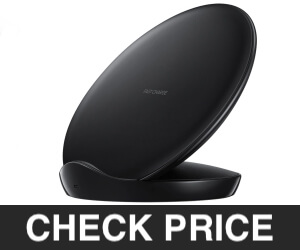
Of course, this party wouldn’t be complete without a proprietary charger by none other than Samsung themselves. The Samsung charger is on the pricier end. Adding that to the fact that Samsung has been a pioneer of wireless charging, we would expect it to deliver some pretty great features.
You might worry that, since the charger is by Samsung, it is only compatible with Samsung phones. Luckily, that is not the case. This charger is compatible with any Qi-compatible smartphone, including the iPhone 8, 8 Plus, and X.
I am absolutely awed by this charger’s unique futuristic design. Words won’t do this justice – when I say that it’s two discs coming together at an almost perpendicular angle, and that it looks like a cross between a puck and a stand, I make it sound like something Frankenstein might have made. But, if that’s the case, then this would be Frankenstein’s third generation device, when all the nuts, bolts, and seams have been hidden, and instead of a horror story it’s a romantic sci-fi.
Now, even though it looks like two pucks, it is a stand, to be sure, but the back of the stand is large and circular, like an oversized puck. I think that is intentional, to increase the charging real estate so your phone can be placed in pretty much any orientation and still charge.
What I Like
When I first saw the Samsung wireless charger, I went through a bit of cognitive dissonance. I love the fact that they didn’t overlook the ability to place your phone in either landscape or portrait mode when charging. That means you get to use it as much as you want and still get it to charge. There are puck models of the Samsung wireless charger which are much simpler and do not have this advantage, but the stand version is as fast as any charging stand you find out there.
The charging rate on the Samsung wireless charger is 9-watts. Now, before you frown at that, I can say that the charger still charges a phone very quickly. I don’t exactly know what kind of engineering went into it, but they managed to make their 9-watt fast charging system feel like the 13.5-watt Pleson. I tried my girlfriend’s Samsung Galaxy S9 on the fast charge. It filled up at the optimal rate even while she was chatting and posting on social media the whole time, and with her GPS on. It was just something else.
Even at the standard 5-watts that iPhones get, mine was able to charge in just a few hours. And that’s while I was using it – I was checking messages, had the GPS enabled, browsing social media. All of this, of course, requires that you have a regular type C USB charger for the fast charging and a regular QC 2.0 adapter for the standard charging.
The LED light is multicolored and comes with a pleasant and faint glow to tell you what the charging status of the phone is. With most stands, you expect the LED light to be rather obvious and at the front of the charging stand. However, with the Samsung, it’s a lot more subtle, being located under the circular puck at the bottom of the stand. And not having a bright LED light glaring at me is something I appreciate.
The one I used had two coils, which allowed me to charge my phones in whatever orientation I wanted. There are models of this same charger that come with 3 coils, instead of 2, so you get to charge your phone even more easily due to even more charging real estate. Of course, it is Qi certified and will charge your phone as long as the phone is Qi enabled.
What I do not Like
For the most part, the only thing I did not like here was the fact that this charger is not very case friendly. The official number may be 3 mm, but sometimes, even that might give you issues charging. To be safe, make sure the casing on your phone is less than 2 mm thick (or, be prepared to take your phone out of its case every time you want to charge up).
- Fast charging
- Sleek design
- Fan at the back
- Not very case friendly
6. Ellesye – Best for warranty
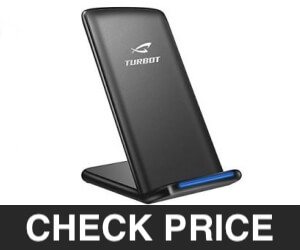
Every charger manufacturer on our list tries to fill a niche. For Ellesye, that niche is dependability. They are so confident in their wireless charger that they back it with a lifetime warranty.
What I Like
This charger was engineered as a stand with 3 coils. The number of coils is important because it gives the charger lots of real estate. This means not only that you can place your device in landscape or portrait mode, but also that you don’t have to worry about setting your device on some perfect, hard to pinpoint spot on the charger in order to get your phone to charge.
This is also one of the most versatile wireless chargers I have seen. Many other chargers will only charge a narrow list of Qi-enabled devices. Many are exclusive to the Samsung Galaxy suite of phones and iPhones. This wireless charger is a cut above the rest in that respect. It will charge an XPERIA XZ2, Nexus 4/5/6/7, Nokia Lumia 1520/1020/920/928, MOTO Droid Maxx/Mini/MOTO Turbo 2, HTC Droid DNA, Blackberry Z30 or pretty much any other Qi-enabled phone, including some LG phones. I love that. That means you don’t have to worry about whether or not your device is compatible, which makes this a great choice for businesses that keep a charger on-hand for customers or employees.
The LED light is very user-friendly and will glow green when the phone is charging and flash blue when it isn’t charging.
This wireless charger is also very case friendly, being able to charge through a casing of up to 4 mm. Your phone should be able to charge easily, even with a phone cover on. Just make sure you don’t have anything magnetic or metallic on the back of the phone – that will interfere with the charger.
What I do not Like
Unfortunately, for all its splendor and glory, the Ellesye is a painfully slow charger.
It’s a charging stand, which means I should be able to use my phone while it charges. Unfortunately, this means it will either charge slowly or, depending on the power demands of the particular apps I am using, will even slowly discharge instead of charging. The fastest mode, even for the Samsung Galaxy suite of phones and tablets, is 5-watts.
For those of you not paying close-enough attention, 5-watts is among the lowest on our list. And, if you use the Ellesye, you’ll have to be satisfied with placing your Samsung phone on the charger and leaving it alone for a good number of hours so it can go from zero charge to full charge. Meanwhile, even with an iPhone, the 5-watt speed feels slow and I definitely cannot use my phone while it charges. In a way, it negates the whole point of it being a charging stand in the first place.
But still, I want to say that if I put together the charger’s ability to work with many different brands of phones and tablets, coupled with its excellent warranty, then I can see where a coffee shop, for example, might want to set these out at strategic tables. It would be nice perk for paying customers to have a charger like this, and the warranty means that the coffee shop owner doesn’t have to worry about customers mistreating the chargers.
- Lifetime warranty
- 3 coils for charging in any position
- Case friendly
- Very, very slow
7. Kuppet – Best for users with both Apple and Samsung devices
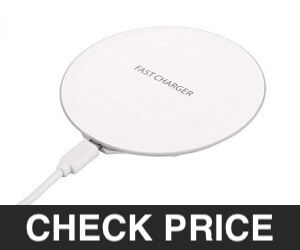
This is another great wireless charger that delivers great functionality coupled with a beautiful design. It’s Qi-certified, is universal, which means it will charge just about any Qi enabled device, and is also a pretty affordable charger.
What I Like
This charger can easily charge any Qi enabled device. I think it’s just about on the same level as the Ellesye as far as versatility is concerned. It will charge Samsung Galaxy S7, S8, S8 Plus, Note 5 and Note 8; iPhone 8, 8 Plus, and X; Google Nexus 4, 5, and 6; and any other Qi-enabled device, such as the range of Motorola Droids, the Nokia phones, LG phones, and so on.
The puck says, rather assertively on the surface, ‘FAST CHARGE.’ That’s a pretty bold claim to make, considering the fact that they only list it as 10w – and while 10w is pretty good, it’s not the highest we’ve seen.
So, as you might imagine, I was eager to test their claims. First, I charged my iPhone, and then my girlfriend’s Samsung.
For my iPhone, it was great. It charged in 2 hours max. I did a lot of things on that iPhone. Not only was my GPS on, but I was also constantly switching between social media and some videos I was watching on YouTube. That must be one fast charger for my iPhone to be fully charged in two hours with that level of activity. My girlfriend and I then tried it with her Samsung and the results were still pretty good. She was constantly on the phone, making video calls and watching YouTube, and it did as well as any other 10w charger on our list.
The LED light is something else I am deeply impressed by. It’s in a very thin line on the side of the charger, which means you don’t have to worry about not being able to get any sleep with the light on throughout the night. That was very considerate of the people at Kuppet. It’s also noiseless, which means no annoying beeps when you’re trying to get some peace and quiet.
The charger isn’t picky about where you place your phone, either. The design is good enough that your phone will charge no matter where it is on the puck, and that is a great thing in my book.
What I Don’t Like
If I were to change one thing about this wireless charger it would be the fact that it is a puck. I mentioned earlier that I charged it while using the phone to see how fast it would charge. It turned out to be pretty fast, but I also turned out to need to visit my masseuse by the end of the experiment. Pucks just aren’t ergonomically designed. Period. If only the people at Kuppet could jam the great features of this wireless charger into a charging stand, I think it would sweep up all the wireless charger awards. It’s a great charger with a non-ergonomic design.
It also doesn’t come with an adapter. It only features the charging pad, a micro USB cable, and a user’s manual. But I think at this point we are all beginning to accept the fact that a wireless charging kit that includes an adapter is an exception, rather than the norm.
- Fast charging
- Friendly light
- Can charge in any position
- Puck design isn’t ergonomic
8. Anker – Best for versatility
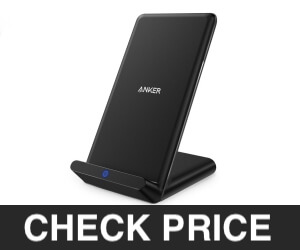
With over 20 million customers, Anker is a popular brand in the charger business, both for wireless and wired. Here we’re going to review the Anker Wireless Charger, Qi certified Wireless Charging Stand (and I have to ask – what is it with the long, uninspired names on all these chargers?). I love how efficient all the charging components are. Not only is the design very sleek and futuristic, which for me is always a plus when it comes to a wireless charging stand, but the components are pretty advanced, and so is the chipset.
What I Like
While this is only a 5-watt charger, the manufacturer claims that the efficient chipset will charge your phone relatively faster than other 5-watt wireless chargers out there. That’s pretty good for my iPhone, which will be full in 2 hours with the Anker.
I also like that it’s a stand. Anker also sells a model of this charger that is a puck. I have no idea why anyone would buy it, and I didn’t review it. Stands are just so convenient, and pucks are not.
This charging stand is also compatible with Nokia Lumia phones, Samsung Galaxy phones, iPhones, Yota phones, and iPhones.
What I Don’t Like
I don’t like the fact that it’s not fast-charging enough for a Samsung Galaxy for you to use your phone at all while it is charging, the manufacturer’s claims notwithstanding. Even with an iPhone, you shouldn’t have any heavy apps switched on if you want your phone to charge quickly. That defeats the purpose of the charger being a stand, which is the kind of design that allows you to use your phone while it’s charging. If you’re going to make a charging stand, then at least make it fast enough that it serves its purpose.
- Ergonomic design
- Versatile
- Certified safe
- Very slow charging
9. Yootech – Best for adaptability to different phones
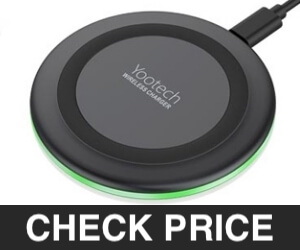
Now here is a charger that tries to cater to everyone’s needs while remaining fairly affordable. The Yootech wireless charger has only one major drawback: the fact that it is a wireless charging puck and not a stand. But don’t let me get ahead of myself. Let’s look at the likable and the not so likable things about this wireless charger first.
What I Like
Given the different power needs of the Samsung Galaxy phones, iPhones, and other phones, I decided to look for a wireless charger that could deliver different charging rates that cater to all of them. The Yootech does exactly that. So, for a Samsung Galaxy phone or tablet, it will charge at about 10-watts. For your iPhone, it will charge at about 7.5-watts. For any other Qi-enabled phone it will charge at the standard 5-watts. For all three styles, the rate is about as good as any other device. And for Apple products, it’s as good as any charger on our list.
The thickness of this puck is just 0.47 inches and that, coupled with the intelligent temperature control, ensures that you get a cooler but much more efficient charging experience than similarly priced chargers.
The indicator tells you whether the phone is charging or not. It also has the nifty feature of blinking repeatedly when there is anything such as metal or magnetic cards and objects within the detection area of the charger. Normally, I hate unnecessary blinks and bloops – but I appreciate this warning feature. It blinks if there’s a problem, and doesn’t if there isn’t. Coins, ID cards, bank cards, iron, etc, will interfere with the charging of your phone. In fact, the damage can be double. If you place a credit card near the charger the magnetic strip might be demagnetized, rendering the credit card useless. So, it’s a good idea to always ensure these things are nowhere near the vicinity of the charger when it is on.
It will also charge your phone with cases up to 4mm thick, which is almost as good as the best on our list. Anything above 4mm, though, and your phone may not charge at all. I would recommend keeping your phone case thickness under 2 mm for the best performance. If the phone casing is thick, even if it is under 4 mm thick, it might affect the speed at which the phone gets charged, or cause the charging to be intermittent.
This wireless charger is also sleep-friendly. A common problem with many wireless charging devices is the annoying beeps and lights, which are too loud and too bright, respectively. That means sleeping – or trying to think deeply – with such a device in the room can be a problem. You won’t have that issue with the Yootech. The green LED light will flash for only 3 seconds if the charger is well connected to your phone. If it recognizes your phone, it will stay on for only 16 seconds. Once it enters charging mode, the light will go off and you won’t have to worry about it until your phone is fully charged. I think that’s a great thing and very considerate when designing a wireless phone charger.
The charger also comes with an 18-month warranty and a 12-hour response to complaints. Customer service is usually a neglected area with wireless charging devices and Yootech are gladly doing something about it.
What I Don’t Like
I don’t like the fact that it’s a puck and not a stand. This wireless charger will charge my iPhone at blazing fast speeds. It will easily do the same for my girlfriend’s Samsung Galaxy. It can be really tempting to want to use your phone with a charger that fast. You want to enjoy all the apps on your phone and still be able to charge it in the meantime. Unfortunately, you will have to wait for it to charge. The only reprieve, in this case, is the fact that you won’t have to wait too long because of how fast it charges.
- Fast charging
- Intelligent indicator
- Temperature control
- Puck design is not ergonomic
10. Nanami – Best for ergonomic design
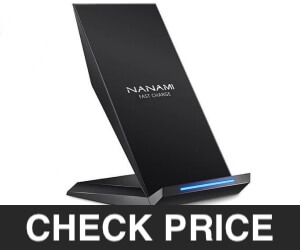
You have probably noticed at this point that I have a soft spot for charging stands because of their ergonomic design. The Nanami is as ergonomic as they get with its windsurfer design. When it comes to charging speeds, the Nanami advertises itself as having two modes. The fast charging mode is for the Samsung Galaxy suite of phones. The exact speed isn’t mentioned in the specifications but, based on my own experiments with my girlfriend’s phone, I would place it somewhere around 10-watts. The other mode is the standard charging mode, which is for iPhones and other Qi-enabled devices. Based on the experiments I carried out with my own iPhone, that should be a speed between 5-watts and 7.5-watts. I’m willing to bet it’s 5-watts but with very efficient charging, so it’s faster than your average 5-watt charger. You should be able to use apps that don’t consume a lot of battery power on your phone during the charging process, at any rate.
What I Like
It’s a charging stand and has a large surface, which means it has a delightfully ergonomic design that I can take full advantage of. I can place my phone in either portrait mode or landscape mode and use it while it’s charging. The charger also comes with 2 coils. It can easily detect your phone and charge it no matter what position you place it in.
There are also four anti-slip rubber feet beneath the stand to ensure stability.
The LED indicator is also pretty intelligent. The LED lights are multicolored to communicate different things. When in standby mode, the light will glow a solid blue. When charging it will glow green, and when the phone is not properly placed for charging the blue light will flash continuously for one second to indicate that. It will also do the same if there are any metal or magnetic objects nearby which might interfere with the charging process.
What I do not Like
I don’t like the speed on my iPhone. I have to use apps that don’t demand too much of my battery power when charging my phone or it will be a little slower. The same applies when you’re charging a Samsung Galaxy phone.
- Ergonomic design
- Safety features
- Intelligent indicators
- Charging a little slow
Wireless Chargers Buying Guide
Wireless charging technology has been around for quite a while. But it has only started to become ubiquitous fairly recently. Part of the reason for this is the emergence of a uniform standard that more and more manufacturers are supporting: Qi technology. There are “standards” other than Qi, which in my opinion is too bad; having one common standard makes it possible to design wireless chargers that can work with any device, regardless of its make or manufacturer.
Another reason why wireless chargers have become so popular is that the world’s two largest smartphone manufacturers, Samsung and Apple, have begun to use them. Samsung led the push for wireless chargers and now Apple has caught up with the iPhone 8 and iPhone X. And both support the Qi standard, which means a lot of wireless charger manufacturers have flooded the scene, coming up with different types of chargers that boast different features.
How does Wireless Charging Technology work?
Believe it or not, wireless charging technology has been around for over a century. Late in the 1800s, Nikola Tesla demonstrated the phenomenon of magnetic resonant coupling, through which electricity could be transmitted through the air. A transmitter and a receiver would be placed near each other and the transmitter would create a fluctuating magnetic field, which would cause electricity to flow in the receiver. This technology remained dormant for most of the twentieth century though, due to a lack of practical applications. That is of course, until the concept of wireless charging came along.
That’s pretty much the simple version of how most wireless chargers for phones work. Copper coils in the wireless charger create a fluctuating magnetic field which induces a current to flow in the phone and charge the battery.
How to Choose a Wireless Charger
1. The Shape and Size of the Charger
Wireless chargers come in a variety of shapes and sizes. Each of these designs comes with its own set of pros and cons. Some will work better in one circumstance, and others will work better in other circumstances, so it’s important to know how you’re going to use your charger, and what you expect to get out of it, before you buy.
For example, I hate pucks and mats. For me, they render the charger almost useless. When I work, I want to have my phone available, and pucks and mats simply aren’t ergonomic. However, if you are going to buy a charger knowing that you’re going to have it on your bed stand, and that you intend for your device to charge while you sleep, then having a puck or a stand isn’t so bad.
There are 3 main categories of wireless chargers that you could choose from: pucks, mats, and stands.
Pucks
Pucks are the most common category of wireless chargers. It’s called a puck because it resembles the flat puck used in ice hockey that players hit around trying to get into a net. It’s like a circular saucer that you place your phone on top of. The puck itself will lay flat on a table, desk, or any other surface you find convenient.
Puck-shaped wireless chargers tend to look very sleek and stylish. They do, however, come with some issues. To start with, you may have issues seeing the phone’s screen while it’s laying on the puck, which makes it a little hard to use your phone while it’s charging.
Additionally, pucks have a small surface area. This means that it can be hard to find the sweet spot that is needed to get a connection between the charger and your device. While this might not seem like a problem, if you’re the sort of person who will pick up your phone a lot to change songs or adjust the volume or answer a call or whatever, then you’ll have to remember to be careful when putting your phone back on the charger, because not hitting that sweet spot over the puck means a dead battery.
Mats
Mats are similar to pucks in that mats also lie flat, and your device lies atop it. But mats aren’t as hard as pucks – you aren’t dealing with a hard circular device anymore. The real difference between mats and pucks, though, is the surface area. The surface area on a mat tends to be relatively large – so large, in fact, that you can charge multiple devices at once. That’s a really cool feature.
Unfortunately, however, mats have most of the same drawbacks as pucks. They also require you to lay your phone flat on the mat when charging, making it difficult for you to use your phone and charge it at the same time.
Stands
The charging stand has the major advantage of holding your phone in an upright, though slightly angled, position. This allows you to see things such as messages and notifications while the phone is charging.
Now, with stands, you also get a lot more options in the marketplace, which makes this one of the more versatile forms of wireless chargers available. For example, there are options that allow you to choose between portrait and landscape modes for your phone. There are also versions that allow you to adjust the phone to multiple angles so you have more flexibility overall. The very best stand chargers on the market will even allow you to detach the charging puck itself from the stand so you can lay it flat on the table for even more versatility when charging. The way I see it, these wireless chargers make it possible for you to have it all.
2. Charging Speed
The charging speed is one of the greatest considerations in the market for wireless chargers and is perhaps the single greatest reason why wireless chargers haven’t caught on more quickly. Wired chargers still hold the title of fastest chargers overall, and, until recently, wireless chargers were painfully slow, making them more of a novelty than a viable option. That said, they have improved significantly, even though some of them are still quite slow.
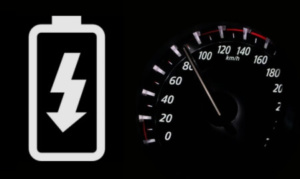 For many chargers out there, the max power they can crank out is about 5-watts. This is okay for charging your battery overnight or if you don’t use your phone at work or something, but it isn’t going to be as fast as a wired charger. Things like checking your messages frequently or playing games are going to severely hamper the speed. At 5-watts, not only will your battery charge slowly, but if you use it much, you’ll even lose charge. In effect, the charger will only slow down the rate of decline of your battery’s power.
For many chargers out there, the max power they can crank out is about 5-watts. This is okay for charging your battery overnight or if you don’t use your phone at work or something, but it isn’t going to be as fast as a wired charger. Things like checking your messages frequently or playing games are going to severely hamper the speed. At 5-watts, not only will your battery charge slowly, but if you use it much, you’ll even lose charge. In effect, the charger will only slow down the rate of decline of your battery’s power.
There are better chargers, including many that we looked at on our list, which will give you max power of 7.5-watts. These are a little better than the 5-watt chargers. Apple’s iPhone 8, Plus, and X, for example, are able to charge at such speeds from iOS 11 onwards. That makes things a little better, but they are still relatively slow compared to other players in the market.
The fastest wireless chargers yet on the market are 15-watts. They will easily charge power-hungry phones like the Samsung Galaxy Note8 and S8. Apple devices, because of the way they are engineered, have to charge more slowly. Even so, these max 15-watt devices will often charge Apple phones as fast as any charger out there. Also, the fact that such a charger will provide you with up to 15-watts of power means it should be able to comfortably charge anything released in the near future, that has a more demanding charge cycle.
3. Suitability for Use in a Car
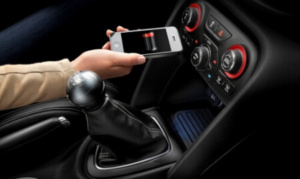 Another consideration when choosing a charger is whether or not – or how – it works in a car. A growing number of modern cars offer wireless charging as one of their features. This is great news, and it makes me very happy to see that car manufacturers are jumping onto the wireless-charger bandwagon. There is just one problem – the fact that most car manufacturers use their wireless chargers to hide your phone. I’m completely on-board with this as a safety feature. Texting and driving, for example, is a problem. But what about hands-free talking? Changing music station or the volume from your phone? What about using Google maps? While drivers should certainly not take their eyes off the road for more than a mere instant, it’s unrealistic to try to force drivers to be unable to even see their phone. As far as I’m aware, there’s never been a problem with people interacting with, for example, their car radio. For my money, it would be better for cars to disable those parts of a phone that are truly dangerous – such as texting – while also putting the phone in a position on the dashboard that imitates some of the gauges and features that drivers need or expect to have. If a driver is changing a station on their phone, and their phone is in their lap, then that’s a problem. But if the phone is close to where radio dials have always been – high on the dashboard, so that the driver’s eyes never stray far from the road – then that’s meeting the needs of the driver.
Another consideration when choosing a charger is whether or not – or how – it works in a car. A growing number of modern cars offer wireless charging as one of their features. This is great news, and it makes me very happy to see that car manufacturers are jumping onto the wireless-charger bandwagon. There is just one problem – the fact that most car manufacturers use their wireless chargers to hide your phone. I’m completely on-board with this as a safety feature. Texting and driving, for example, is a problem. But what about hands-free talking? Changing music station or the volume from your phone? What about using Google maps? While drivers should certainly not take their eyes off the road for more than a mere instant, it’s unrealistic to try to force drivers to be unable to even see their phone. As far as I’m aware, there’s never been a problem with people interacting with, for example, their car radio. For my money, it would be better for cars to disable those parts of a phone that are truly dangerous – such as texting – while also putting the phone in a position on the dashboard that imitates some of the gauges and features that drivers need or expect to have. If a driver is changing a station on their phone, and their phone is in their lap, then that’s a problem. But if the phone is close to where radio dials have always been – high on the dashboard, so that the driver’s eyes never stray far from the road – then that’s meeting the needs of the driver.
Alright, enough prancing around on my little soapbox. Back to wireless chargers.
If you like to stream music or use maps for navigation when you’re driving, there are wireless chargers that have little clips you can use to attach them to the air vents on your dashboard. This makes sure the phone is always at your eye level and allows you to easily follow the route on the map in case you’re using your phone to navigate. The charger also has spring-loaded arms which means it will be easy for you to slip your phone in and out of them when you want to pick a call, for example (this is a case of market forces driving innovation – it won’t be long before car manufacturers catch up).
Here again, you should be careful about the rate of charging. There are wireless chargers out there that will actually cause your phone to lose power if you’re using something as power-intensive as GPS. Especially if you use apps such as Waze on your commute, you’ll need to go for the best quality wireless charger you can get – those with rates of about 15-watts – for the best results. Anything below 10-watts is as good as having your phone lose power at a slower rate.
4. Manufacturer
Here’s something else a lot of people are worried about: Does your wireless charger have to be from the same manufacturer as your phone? Thankfully, the answer is no. One of the reasons wireless charging technology has been so slow to catch on is the fact that most phone manufacturers aren’t in the wireless phone charger manufacturing business; they make the phones, but not the chargers.
Luckily, this problem has been solved in large part by the existence of charging standards. The most widely accepted of these is the Qi (pronounced chee) standard. There are also other standards, such as Samsung’s Fast Wireless Charging and PMA, or Airfuel. However, Qi is, by and large, the most popular one in the market, being accepted by pretty much most of the phones that support wireless charging technology, including the iPhone.
Basically, all you need to do is find a charger that matches the standard supported by your phone. If you have a phone that only accepts Qi-certified wireless chargers, then that’s the kind of charger you should get. You could even go and find a so-called universal wireless charger that supports multiple standards and so can wirelessly charge phones with different standards.
5. Phone Safety Features
A standard feature of any good charger is that it protects your phone against such things as overvoltage and overcurrent, which are characteristic of power surges. It should also protect your phone against such things as overheating and overcharging, both of which are common problems with inferior wireless chargers.
6. Case Friendliness
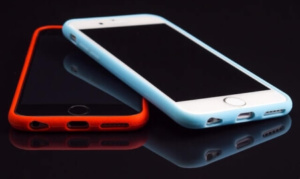 A good charger should also be able to charge your phone through the case. The very best ones will be able to charge through cases up to 5 mm thick. For references, that’s the thickness of some of the best cases out there, made by manufacturers such as Caterpillar and Pelican for tough work environments. However, the average case will be about 2 mm in thickness. All the same, you might want to get a charger with a large case-thickness allowance, just to be safe. If the case is too thick for the charger, then the phone will either not charge at all or will only charge intermittently.
A good charger should also be able to charge your phone through the case. The very best ones will be able to charge through cases up to 5 mm thick. For references, that’s the thickness of some of the best cases out there, made by manufacturers such as Caterpillar and Pelican for tough work environments. However, the average case will be about 2 mm in thickness. All the same, you might want to get a charger with a large case-thickness allowance, just to be safe. If the case is too thick for the charger, then the phone will either not charge at all or will only charge intermittently.
And be warned. Some cases come with magnetic or metal clips. Other cases also serve as credit card holders. In both of these cases, the metal and magnets will interfere with the wireless charger. It could de-magnetize your credit cards (or ID cards, etc), and even damage the charger. So be mindful of any metallic add-ons to your case.
Top Rated Wireless Chargers
It should be interesting to note at this point that wireless charging is becoming more and more convenient. Now, wireless chargers are being integrated into coffee shops and retailers the world over. You shouldn’t be surprised to find a wireless charger affixed to some of the furniture at your favorite coffee shop pretty soon.
There are even apps out there that give you step-by-step directions to the nearest public spot with a wireless charger. That means you typically don’t have to worry if you forget your wireless charger at home.
Alternatively, you can just buy a spare charger to use in the office or elsewhere and have the main one to use at home.